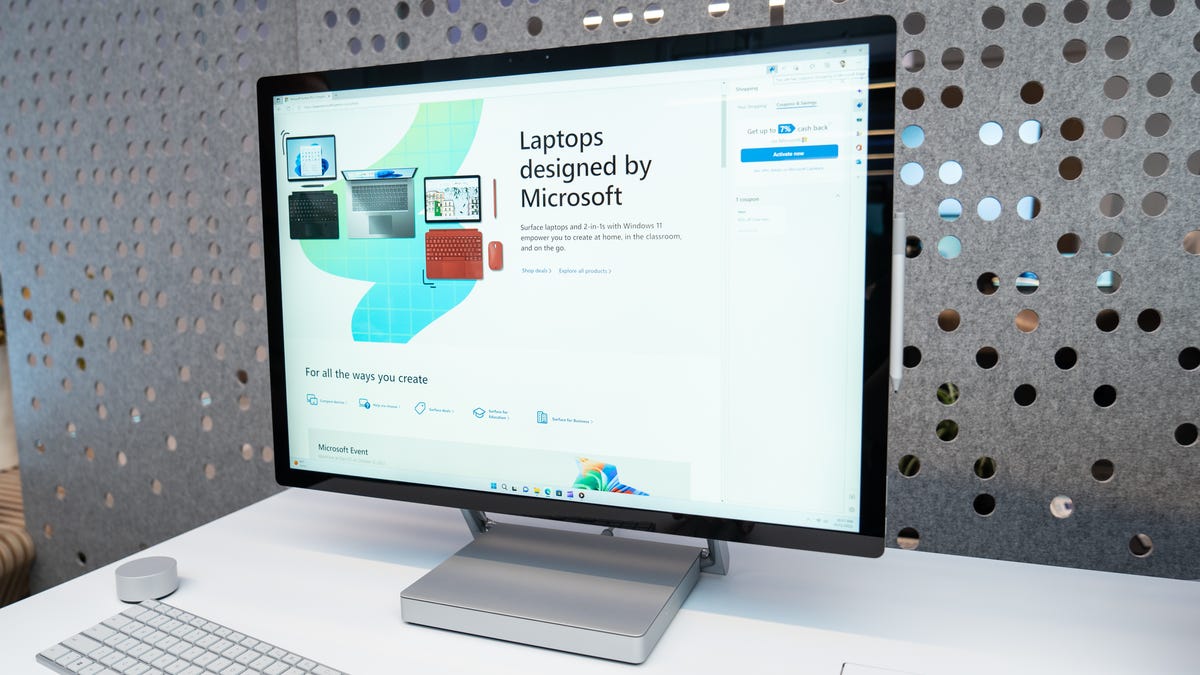 Why You Can Trust CNET
Why You Can Trust CNET Microsoft Surface Studio 2 Plus All-in-One Gets Resuscitated
"Bring out your dead!" "I'm not dead! I feel happeeee!"

I really thought Microsoft had given up on the full-size Surface Studio all-in-ones: The Surface Studio 2 was released in the fall of 2018, and we've heard crickets ever since. But after four years, Microsoft's surprised us with a refresh during Wednesday's Surface event. Unsurprisingly, the updates are minimal -- Microsoft seemed to do the least it needed to in order to make it 2022-ready. It hasn't changed enough to earn a "3," merely a "Plus," as in Surface Studio 2 Plus.
It's shipping on Oct. 25 for a relatively whopping $4,500.
The upgrades amount to a Core i7-11370H (a low-power, gaming-targeted mobile processor from 2021), the mobile version of the Nvidia GeForce RTX 3060 (a better-than-basic discrete graphics processor), dropped two USB-A ports and the SD card reader in favor of three USB-C/Thunderbolt 4 ports, updated the wireless to Wi-Fi 6 and Bluetooth 5.1 and... that's it. The company says it has enhanced the camera and mics, but it's mostly the processing improvements made in Windows 11. So little has changed that it barely got a mention during Wednesday's announcements.
The 28-inch, pressure-sensitive 3:2 aspect ratio display (resolution between 4K and 5K) with the smart hinge design still ranks up there with newer models even after all these years, though I'd hardly still be calling it "strikingly large." And in another marketing-speak coup, referring to the CPU as "up to 50% faster" than the earlier model is laughable given that the former CPU was seventh-generation. And even if the display is bright with good color accuracy, there's still no HDR.
I can see reasons for not just whacking it on the head. For instance, Microsoft has commercial customers who are fans of the system but who've justifiably complained how creaky the internals have gotten. They may also have custom applications they're dependent on for the generally unloved Microsoft Dial input device. (Which Microsoft hasn't touched since it launched in 2016.)
Plus, the Surface Studio is a pro system line, and those don't get updated or replaced as frequently as consumer models. But that's also why you shouldn't skimp on the power up front, though in this case it probably would have required some redesign to accommodate higher-power components. And the price is really high.
And it's not like there are any competitors. The HP Envy 34 is one of the only big-screen all-in-ones left, and it doesn't have the stylus-friendly screen or hinge. Plus all-in-ones tend to favor form over function, which means they usually have disappointing CPU and GPU specs (to minimize heat in those tiny, sleek designs).
But it all just reaffirms my desire for Microsoft to make the display a standalone product so you can connect it to the system of your choice, or even two of them.
Read more: Best Desktop PC for 2022

